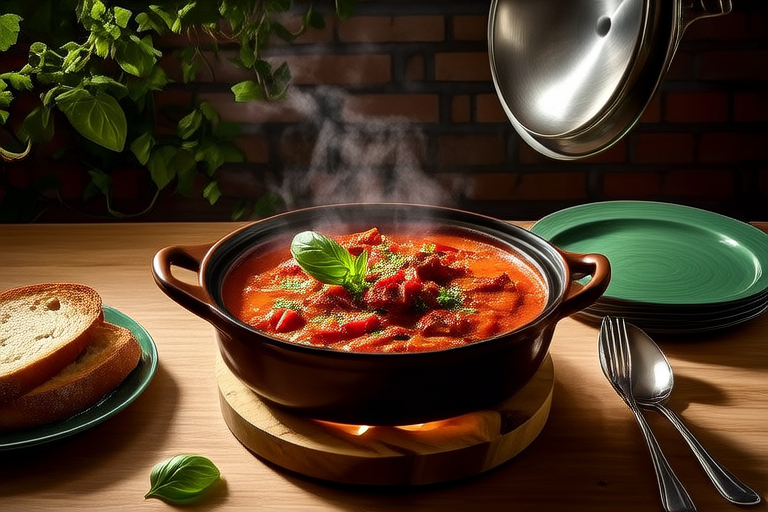Taste the World: Travel Adventures in Global Gourmet Cuisine

Taste the World: Travel Adventures in Global Gourmet Cuisine
Introduction
Food is more than just sustenance; it’s a passport to understanding the world. Every bite tells a story, a narrative woven from the threads of history, culture, and tradition. Traveling to experience new flavors is no longer just about sampling exotic dishes—it’s about immersing oneself in the heart of a community. As gourmet travel gains momentum, it offers a unique opportunity to savor the essence of diverse cultures through their culinary expressions.
Cuisine is often the most authentic reflection of a society’s identity. From the hearty stews of Northern Europe to the vibrant spices of India, each dish carries the legacy of its people. This article embarks on a gastronomic journey across continents, exploring the rich tapestry of global gourmet cuisine. Whether you’re a seasoned traveler or a curious foodie, this guide will inspire you to taste the world one meal at a time.
Exploring Regional Flavors
Regional cuisines are deeply rooted in the geography, climate, and cultural heritage of a place. These factors shape the availability of ingredients and influence cooking methods. For instance, the Mediterranean diet thrives on olive oil, fresh vegetables, and seafood, reflecting the region’s coastal landscape and mild climate. In contrast, Southeast Asian cuisine is characterized by bold flavors and aromatic herbs, a result of the tropical environment and fertile soil.
Let’s delve into some iconic dishes from around the globe:
- Mediterranean: Think of Greece’s moussaka, Italy’s risotto, and Spain’s paella. Each dish showcases the abundance of local produce and the art of slow-cooked meals.
- South East Asia: Dishes like Vietnam’s pho, Thailand’s pad thai, and Indonesia’s nasi goreng highlight the region’s reliance on rice, fresh herbs, and spices.
- Latin America: Embrace the fiery flavors of Mexico’s mole, Argentina’s asado, and Brazil’s feijoada. These dishes reflect the continent’s love for bold spices and communal gatherings.
Unique ingredients and cooking techniques further distinguish these regions. For example, the Mediterranean utilizes olive oil for its health benefits and flavor, while Southeast Asia employs fermentation and pickling to preserve foods during monsoon seasons.
Culinary Capitals Around the Globe
Certain cities have earned their reputation as culinary hubs, attracting food enthusiasts from all corners of the world. These metropolises boast a vibrant dining scene, offering a spectrum of flavors and experiences.
- Paris, France: Known as the “City of Light,” Paris is synonymous with fine dining. Famous markets like Les Halles and Rue Montorgueil offer a plethora of fresh produce and gourmet items. Renowned chefs such as Alain Ducasse and Joel Robuchon have made Paris a culinary destination. Must-try dishes include escargot, coq au vin, and crème brûlée.
- Tokyo, Japan: Tokyo is a paradise for sushi lovers and ramen aficionados alike. Tsukiji Fish Market is a must-visit for seafood enthusiasts. Chefs like Yoshihiro Murata and Seiji Yamamoto have elevated Japanese cuisine to new heights. Don’t miss out on trying sushi, tempura, and tonkatsu.
- Bangkok, Thailand: Bangkok is a melting pot of flavors, where street food reigns supreme. Markets like Chatuchak and Talad Rot Fai offer an array of dishes. Chef Somtow Pongpraphap has gained international recognition for his innovative approach to Thai cuisine. Be sure to sample pad thai, som tam, and mango sticky rice.
In addition to these famous establishments, there are hidden gems scattered throughout these cities. From small family-run restaurants to cozy cafes, each offers a unique taste of the local culture.
Immersive Food Experiences
For those looking to dive deeper into a country’s culinary traditions, immersive food experiences provide unforgettable memories. Participate in cooking classes led by local chefs to learn the secrets behind beloved dishes. Farm tours offer insight into sustainable farming practices and the sourcing of fresh ingredients. Street food excursions allow you to explore lesser-known neighborhoods and interact with locals.
Cultural festivals centered around food and drink also offer a glimpse into the heart of a community. For example, the Oktoberfest in Munich celebrates Bavarian beer and sausages, while the Feast of San Gennaro in Naples honors the patron saint with traditional Neapolitan cuisine.
Travelers interested in learning more about local traditions through food can seek out food tours, workshops, and even volunteer opportunities at local kitchens. These experiences not only enhance your culinary skills but also foster a deeper connection with the places you visit.
Sustainable and Ethical Dining
As awareness grows regarding environmental issues and social justice, travelers are increasingly seeking out sustainable and ethical dining options. Supporting sustainable agriculture and ethical practices ensures that the food we consume is produced responsibly and fairly.
Initiatives promoting responsible tourism in relation to food include farm-to-table restaurants, organic markets, and community-supported agriculture programs. Eco-friendly eateries and farms prioritize reducing waste, conserving resources, and supporting local farmers.
By choosing to dine at establishments committed to sustainability, travelers contribute to a healthier planet and stronger communities. Look for certifications such as Fair Trade, Rainforest Alliance, and Certified Organic when selecting dining spots.
Conclusion
In conclusion, gourmet travel offers a unique way to explore the world—one bite at a time. From regional flavors to culinary capitals, and from immersive food experiences to sustainable dining, there are countless ways to savor the diversity of global cuisines. Embrace the richness of each culture through its food, and you’ll gain a deeper appreciation for the world around you.
The future of gourmet travel lies in continued exploration and innovation. As we become more connected, the boundaries between cultures blur, creating new opportunities for culinary fusion and cross-cultural collaboration. Let’s continue to celebrate the beauty of global cuisine and its power to unite us all.